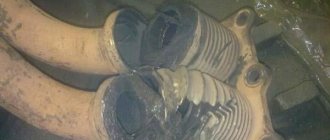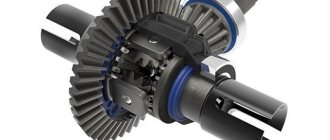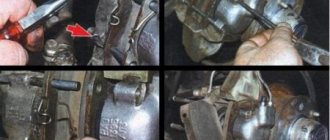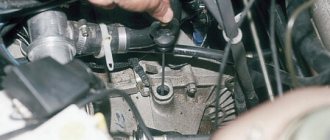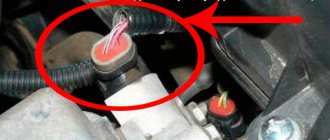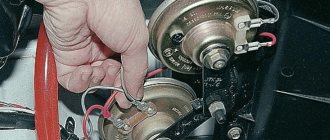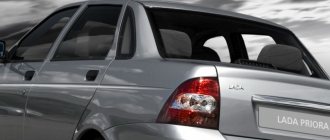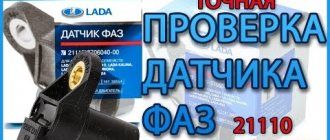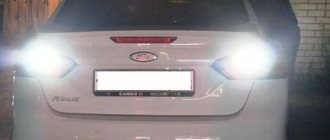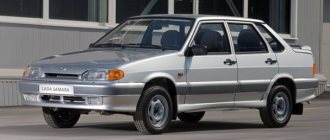What is a steering knuckle
We can safely say that the fist is a multifunctional part. It is installed at the junction of several systems, which is why difficulty arises with classification: which specific system does this element belong to.
Part of the steering, wheel hub, shock absorber strut and other equipment (for example, brake elements) are mounted on it. For this reason, the fist is the node at which system data is connected and synchronized. Since this part is subject to serious loads, it is made of durable material.
Some manufacturers use high-alloy steel to make their products, while others use cast iron. Another feature of the steering knuckle is its extremely precise geometric shape. Depending on the type of suspension and steering, the shape of the fist can be very different.
What is a steering knuckle used for?
The name itself implies one of the purposes of installing this part in a car - to ensure the rotation of the front wheels. If the car is rear-wheel drive, then the fist will have a simpler device.
It is much more difficult to ensure that the drive wheel turns, since in addition to changing the trajectory, torque from the transmission must be supplied to its hub. The presence of a steering knuckle solved several problems at once:
- Provided stable fixation of the rotating hub on which the drive wheel is fixed;
- It made it possible to connect the rotating wheel not only with the transmission, but also with the suspension. For example, in the MacPherson modification (its device was discussed a little earlier ), the shock-absorbing strut of many cars is attached precisely to this part;
- Allows the unit to turn without loss of power when the wheel rotates and the suspension contracts while riding.
Thanks to these functions, the fist is considered both a support in the chassis and an actuating element of the car's steering. In addition to the listed functions, some parts of the braking system are fixed to the fist.
If a part is manufactured with geometric errors, some systems can quickly fail.
The spare part in question is used on the front axle. Sometimes the rear wheel hub support is called identically. They have a similar design, only in the second case the part does not provide the ability to rotate, so it cannot be called rotary.
Operating principle
In order for the suspension to operate using the fist, holes are made in the fist for attaching the lever (in the lower part) and the shock absorber (in the upper part). The stand is attached with a conventional bolt connection, but the lever is secured through a ball joint. This element allows the wheels to turn.
The steering system (namely the tie rod) will also be attached using ball parts (called tie rod ends).
To ensure the rotation of the steering wheels, a bearing (the car is rear-wheel drive) or a CV joint (the car has front-wheel drive) is inserted into the steering knuckle.
Depending on the conditions on the road, the steering knuckle can simultaneously provide wheel rotation, shock absorption, and the supply of torque to the drive hubs.
To see how all the systems in the unit interact, see the following video, based on a review of the car’s suspension:
General vehicle suspension system. 3D animation.
Steering knuckle Hyundai
Every modern car includes an important part - a steering knuckle. This detail is necessarily present in all Hyundai models. Read about the purpose of the steering knuckle in Hyundai cars, types of knuckles, their place in the suspension, design and maintenance in this article.
Purpose of the steering knuckle
The front (steered) wheels of a car create many problems for designers, since here they have to simultaneously ensure reliable fastening of the wheel and the ability to rotate it to a particular angle. Things are even more complicated with front-wheel drive cars - in them it is necessary not only to ensure the installation and rotation of the wheel, but also to transmit torque to these wheels, which is not interrupted and does not change when turning.
The solution to this problem is a special part that is part of the front suspension - the steering knuckle. This part solves three main problems:
• Wheel hub retention; • Connection of the wheel (through the hub) with the suspension elements;
• Possibility of turning the wheel to one or another angle to control the car.
Thus, the steering knuckle simultaneously acts as both a supporting structure that absorbs loads from the wheel and a component of the steering system. A wheel brake mechanism is also installed on the steering knuckle. Therefore, the fist is subject to strict requirements for reliability, strength and manufacturing accuracy.
It is interesting to note that the steering knuckle is often referred to as the hub support for the rear wheels. Indeed, the front suspension steering knuckle and the rear suspension hub support have a very similar design, but the support does not provide the ability to rotate. Here we will talk mainly about the front steering knuckles.
Types of steering knuckles in Hyundai cars
All Hyundai steering knuckles can be divided into two large groups:
• Fists for passenger cars; • Knuckles for trucks and buses.
There are two types of cams used in passenger cars:
• Installed on one ball joint (in the lower suspension arm) and on the silent block of the upper arm - in a multi-link suspension (for example, in Hyundai Sonata and some other models); • Installed on one ball joint (in the lower suspension arm) and on a shock absorber strut - in MacPherson-type suspension (in most Hyundai models, including Elantra, Solaris, Accent, Getz, Tucson, i35 and others).
There is also a third type of knuckle - with installation on two ball joints (in the lower and upper arms), however, such knuckles are used not in passenger cars, but in the multi-link suspension of Porter commercial trucks and H-100 and H-1 minivans. Also, the ball in the upper arm is used in the rear suspension of many Hyundai models.
Trucks and buses use pin-type cams of the same design. Many truck and bus models use identical, and therefore interchangeable, steering knuckles (for example, identical knuckles are installed on the Hyundai HD65/72/78 line of trucks and on Hyundai County buses).
Regardless of type, all Hyundai steering knuckles are made from high-strength alloy (chromium) steels, which are highly durable and resistant to corrosion. The design of cams for trucks and cars is significantly different, so we will talk about each type of these parts in more detail.
Device and types
Manufacturers use different suspension systems in their cars, so the shape of the steering knuckles also varies. This is the very first reason why you should select a part in accordance with the make of the car. a separate article on how to decipher all the symbols ).
Even the slightest discrepancy can either hamper the installation of the part or the performance of the mechanisms. For example, due to improper fastening, the steering rod will not be able to completely turn the wheel, because the ball joint is at the wrong angle, etc.
It is on the steering knuckle that additional equipment is mounted, for example, brake calipers, as well as sensors.
It would be a mistake to think that the manufacturer uses the same design of these spare parts in all cars of the model range. For example, when a manufacturer initiates a restyling procedure (read about what it is and why automakers do it here ), engineers can change the design of a part so that a sensor can be attached to it, which was not in the pre-restyling version.
Malfunctions and possible symptoms
There are several symptoms by which a driver can determine that there is a problem with the steering knuckle. Here are some signs:
- When driving in a straight line, the car pulls to the side. In this case, first of all, the wheel alignment is checked (read how the procedure is done in another review ). If the problem persists, the fault may be in the knuckle;
- The steering angle has noticeably decreased. In this case, it is worth checking the ball joint first;
- The wheel came off. Most often this happens due to a ball failure (a pin is broken), but this often happens when the eye for mounting the fastener breaks;
- A crack in the housing or wear at the bearing mounting location. This sometimes happens when the chassis elements are installed incorrectly (the bearing is pressed in crookedly or the bolts on the wheel are not fully tightened).
As for the formation of cracks, some car mechanics suggest restoring the part by welding it. If the spare part is steel, then it can be restored. Most fists are made of cast iron.
Even if the welder manages to hide the crack, the material itself loses its properties at the processing site. A part undergoing welding will quickly break at the first serious hole.
For safety reasons, if any defects are detected, it is better to replace the part with a new one. To see how this is done, look at the example of a specific car:
Matiz steering knuckle: removal and installation.
Signs of a malfunction of the VAZ 2107 steering knuckle and possible symptoms
Deformation is a problem that is encountered most often in practice. The reasons vary, but most often they lie in a strong shock to the suspension when the car passes uneven sections of the road. Or it occurs due to physical impact after the accident has occurred.
There are main signs by which a malfunction is noticed:
- The axle has worn out, causing play to appear at the wheel bearing.
- The tires on the front wheels are worn out.
- A car from the classic series and others moves away from the main trajectory when moving.
Based on the last two signs, we can say that there is a deviation from the standard indicators during the operation of the unit. A full suspension diagnostic is carried out to further check for faults. Sometimes problems appear due to the fact that the steering rods or silent blocks are worn out, or the wheel alignment angles were incorrectly adjusted. Because of this, the axles on the VAZ 2107 may also fail.
How to remove the steering knuckle?
To be able to remove the steering knuckle, you will have to disconnect all the elements that are attached to it. The procedure is performed in the following sequence:
- The car is placed on a jack or hung on a lift;
- Unscrew the corresponding wheel;
- Remove the brake caliper;
- Unscrew the shock absorber strut mount;
- Press out the tie rod end. To avoid having to change it, it would be better to arm yourself with a special tool;
- We remove the axle shaft from the hub;
- We unscrew the sensors and other equipment, if present in the car. In this case, it would be better to remember where everything is attached. To do this, just take a photo on your phone;
- Let's dismantle the fist itself. To do this, use a flat screwdriver to disconnect the fastening of the retaining ring on the ball joint mounted on the lower arm;
- The last step is to remove the hub from the knuckle (the locknut is unscrewed), before this the splines are unclenched. Next, the wheel bolts are screwed in, and the hub is knocked out from the back with light blows.
Before unscrewing bolts and nuts, it is important to adhere to a simple principle: to reduce the impact on the edges of the fasteners, they are cleaned of dirt and rust, and then treated with a penetrating liquid (for example, WD-40).
Replacement and repair
Despite the apparent complexity, replacing a part such as a steering knuckle is not particularly difficult. The first step is to put the vehicle on the handbrake, then place wheel chocks under the rear wheels and lift the front of the car with a jack. The further technological process is carried out according to the following plan: Remove the brake disc. Unscrew the trunnion fastening.
Remove it as an assembly with the wheel release clutch, brake disc shield and hub. Remove the axle shaft. Separate the tie rod end from the steering knuckle itself. Remove the bolts securing the ball joint to the axle housing flange. Remove the wheel stopper. Using a pry tool, press the ball joint shank out of the axle shaft housing. To do this, use a ball joint remover. Carefully remove the required part, in our case the steering knuckle.
